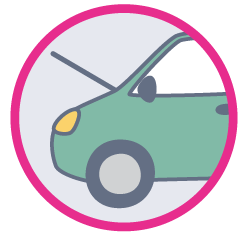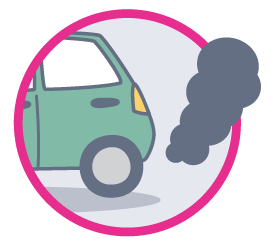Upgrade or downgrade, we have our own reasoning for that all-important decision. Tough times make that decision needing a heavier justification.
Be your need is corporate or personal before you do make the purchase decision you need assessing the need. That is to say, whether you have any other alternatives instead of owning a new car or replacement to meet your mobility needs. In fact, these are types of reviews to do done.
- Economic: The mobility/purchase need analysis (includes CPK, TCO)
- Financial: Cost of capital or opportunity cost evaluation
- Technical: You will read it later
Post pandemic business gives us more reasons to evaluate the prior two. Economic reasons to be assessed to backtrack the need for movement, whilst Financial reasoning is purely based on the funding and cost of capital and its impact on the businesses and lives.
Read our logic here, it’s more of Managing Mobility. We need to assess whether there’s any other way we can meet the need for movement without adding to the fleet. Following is an excerpt of our article Do we need More Cars?

Once you are firm on your decision, including the disposal of existing and renewing the asset you may move on to the last, . That is the Technical evaluation, once you are decided that purchasing a car will be the best in meeting your needs.
Viewing – can do it at a latter stage too!
Arrange to view a car in the daytime — it’s easier to spot problems. Ask the seller not to turn on or run the vehicle at least a few hours beforehand. You want to see how the car performs before the engine is warmed up. To check, place your hand on the car’s bonnet — it should feel cool. If you don’t know much about cars, bring someone who does.
If it’s a privately owned car, ask the seller if you can view the car at their home or workplace. This way you can get a better sense of who the seller is and how trustworthy they are. If someone says they are a private seller but asks you “which car” you want to view, they might actually be a car dealer pretending to be a private seller.
If you have a good first impression of the car and seller, follow these steps and use the resources on this page before you seal the deal:
- Ask the seller important questions about the car.
- Do some basic checks.
- Take a test drive.
- Check the vehicle’s history and paperwork.
- Get the vehicle inspected by a professional.
Don’t feel pressured to buy on the spot. Take as much time as you need to do checks and inspections and to feel confident about your purchase. Read more about common problems and how to avoid them when you buy from a private seller or a car dealer.
Questions to ask the seller
Ask these questions when you view a vehicle:
- Is there anything wrong with it?
- Is there any money still owing on it?
- Are there service receipts for any work that’s been done?
- Is there a second set of keys? Getting a second key cut can be very expensive.
- If the vehicle has a cambelt, when was it last changed? Generally, they need to be changed every 100,000km. Depending on the model, this can be very expensive.
- When were the tires changed? Generally, they need to be replaced every seven years, when the tread depth is less than 3 millimeters deep or if they are showing signs of aging, eg cracks on the sides. Check the tire expiry date.
- Is the vehicle insured? It’s important to know if you’ll be liable for damages if you have an accident while test driving.
- Does the car have to be serviced by the original dealer? Many newer cars must be serviced by a dealer to maintain the warranty. If not the possibility of getting third party service and maintenance if needed.
CPK and TCO
Cost per Kilometer and Total Cost of Ownership are important factors which needs to be in consideration before making that all important decision. This needs to come in to play once you have shortlisted the purchasing options. Needless to say the disposal value of the current, if any too play a major role here. We do not wish to elaborate on tech terms here, reach us via the contact tab should you need us to assist further.
Interestingly it has proven EV s are beneficial than its equivalent ICE. Don’t forget there are many other factors which needs to be inconsideration, especially the range since we are not going to get new units for this year, 2020. Read more of EV CPK & TCO here. https://mobility.lk/cost-of-km-ev-hybrid/
If it’s an electric vehicle:
- What’s the state of the battery’s health and capacity?
- Can the car fast charge? Not all EVs can.
- Is the charging cable designed to fit in to your home sockets and meet safety standards.
Above are just preliminaries, and there are much more!
to know whether an EV suits you and How to check if so…..
HTTPS://MOBILITY.LK/BUYING-PRE-OWNED-EV/
Specific questions to ask a private seller:
- How long have you owned the car?
- Why are you selling the car?
Specific questions to ask a car dealer:
- What on-road costs are covered in the sale price?
- What are your policies if there is a fault after purchase?
Basic checks when you view a car
Use this checklist to run through simple checks to look for potential problems. These checks aren’t a substitute for a pre-purchase vehicle inspection. To safeguard yourself from buying a lemon, you should get a professional to look over the car before you buy it.
Take this guide with you when you view a car:


Before you start the car
Review any service or maintenance receipts or the car’s service handbook. Check the receipts:
- are relevant to the vehicle you are viewing
- show regular servicing and maintenance done on time
- are marked with authorized dealer stamps.

Tires should:
- be free of cracks
- preferably be a well-known tyre brand
- be at least the minimum legal tyre tread depth of 1.5mm — but over 3mm tread is recommended.

Car body check
- at the car side on for any rust, dents, scratches or ripples — the surface should be smooth
- for any cracks or chips in the windows
- outside and inside the car for any difference in paint colour
- for any rust
- at the gaps between the body of the car and the doors, bonnet, tailgate and fuel filler cap — the gaps should all be parallel and the same width all the way around.

Open Bonnet check
- how clean the engine is — an untidy engine may be a sign the seller hasn’t looked after the car well
- for any signs of oil or fluid leaks in, around and underneath the engine
- the belts located on the side or front of the engine for any frays or damage
- the quality and level of the oil using the dipstick — the oil shouldn’t be black or smell burned
- under the oil cap — there shouldn’t be any creamy looking residue.

Tampered odometer
Check for signs of a tampered odometer. The odometer may have been rolled back if the vehicle has low mileage, but the:
- vehicle looks worn
- brake, accelerator or clutch pedals are badly worn
- the driver’s seat looks well used.

When you start the car
- if any warning lights on the car dash stay on
- the exhaust tailpipe for any blue or black smoke that may appear within the first ten seconds of starting the car
- for any leaks, unusual noises or strong exhaust smells coming from the exhaust system
- for any other knocks, clunks or unusual noises coming from any part of the car.
Here is the checklist to follow
HTTPS://MOBILITY.LK/USED-CAR-BUYING-CHECKLIST/
Service History
No odometer can be trusted nowadays and having a proper maintenance history is the key to establish authenticity. Check receipts or records for a history of regular servicing, also all maintenance records which will have it odometer and battery status (If and EV imprinted. Please ask for system generated battery health records/digital copies which is hard to manipulate.
Take a test drive
Plan your test drive route beforehand. Make sure you test the car on the types of roads you’ll drive on most often.
Take your time and put safety first. Pay attention to how the car looks, feels, sounds and smells. Look for warning lights and signs of damage. Feel for any rattles or shakes. Listen for any clunks or odd noises. Check for any smoke, burning or unusual smells.
Test driving tips
Here are a number of checks you can do when you test drive a car. Before you start the car
- Do basic checks before you drive
- Check the insurance. Most dealers have insurance to cover test driving. If you’re testing a privately owned car, you could be liable for damages if the seller doesn’t have insurance.
- Make sure the car has a valid warrant of fitness (WoF) and license (rego). If you test a car at a dealership, they may have special number plates that can be used in place of a WoF or licence.
When you get into the car
- Check the dash for any warning lights that stay on for longer than a few seconds.
- Test the:
- mirrors
- windshield wipers
- indicators
- front and rear lights
- brake lights
- radio
- power windows
- any other features the car has.
- Push the brake pedal. It should feel firm. It shouldn’t feel spongy or press all the way to the floor.
- Pull the handbrake. It should come up a maximum of around a half dozen clicks.
Tests to do on clear road
- Check if the steering wheel points straight ahead while you’re driving straight ahead. Be prepared to correct it if the wheel pulls.
- Check whether the wheel vibrates when you drive. This could happen at any speed.
- Try accelerating quickly to see if the car pulls to one side. Be prepared to correct it if it does.
- Press the brake relatively hard. Check if the steering wheel vibrates or pulls to one side or if the brakes make any screeching noises. Be prepared to correct it if it does pull.
- Park on a hill and put the car in neutral. Pull the handbrake to see if it holds the car in place on its own. Be ready to respond if the car moves.
- Test all the gears and see how they perform while you go up and down hills. The gear changes should feel and sound smooth.
Check the Financial history
Car dealers must make sure the vehicle is not registered as stolen. Also there can be unsettled facilities on cars. No matter who you buy from, you may want to consider double-checking the information the seller has given to you. Usually the vehicle registration book contains this info.
- The ownership history
- Financial ties
Getting a vehicle inspection
If your basic checks, test drive and history checks go well, the next step is to arrange for the vehicle to be inspected by a professional mechanic.
If the car is electric or an uncommon make/model, eg European, arrange to have it inspected by a mechanic experienced with that type of vehicle.
The best way to avoid a problem is to get the car inspected by a mechanic or pre-purchase vehicle inspection service — particularly if you are buying from a private seller.
GoEV has a specialized program to check used EV s for its new buyers, click the link. Buying-pre-owned-ev
An inspection is even more important when you buy from a private seller. You have fewer consumer rights if there’s a fault or problem with the car after purchase.
We thank New Zealand Consumer Protection for some content appear here.

Thank you!
Thank you so much!
Hello, wonderful page. Re automotive dealers, can anyone recommend the best software for stock management? Thank you
Best using your ERP / DMS to get include an inventory control. If not the accounting would be a nightmare!